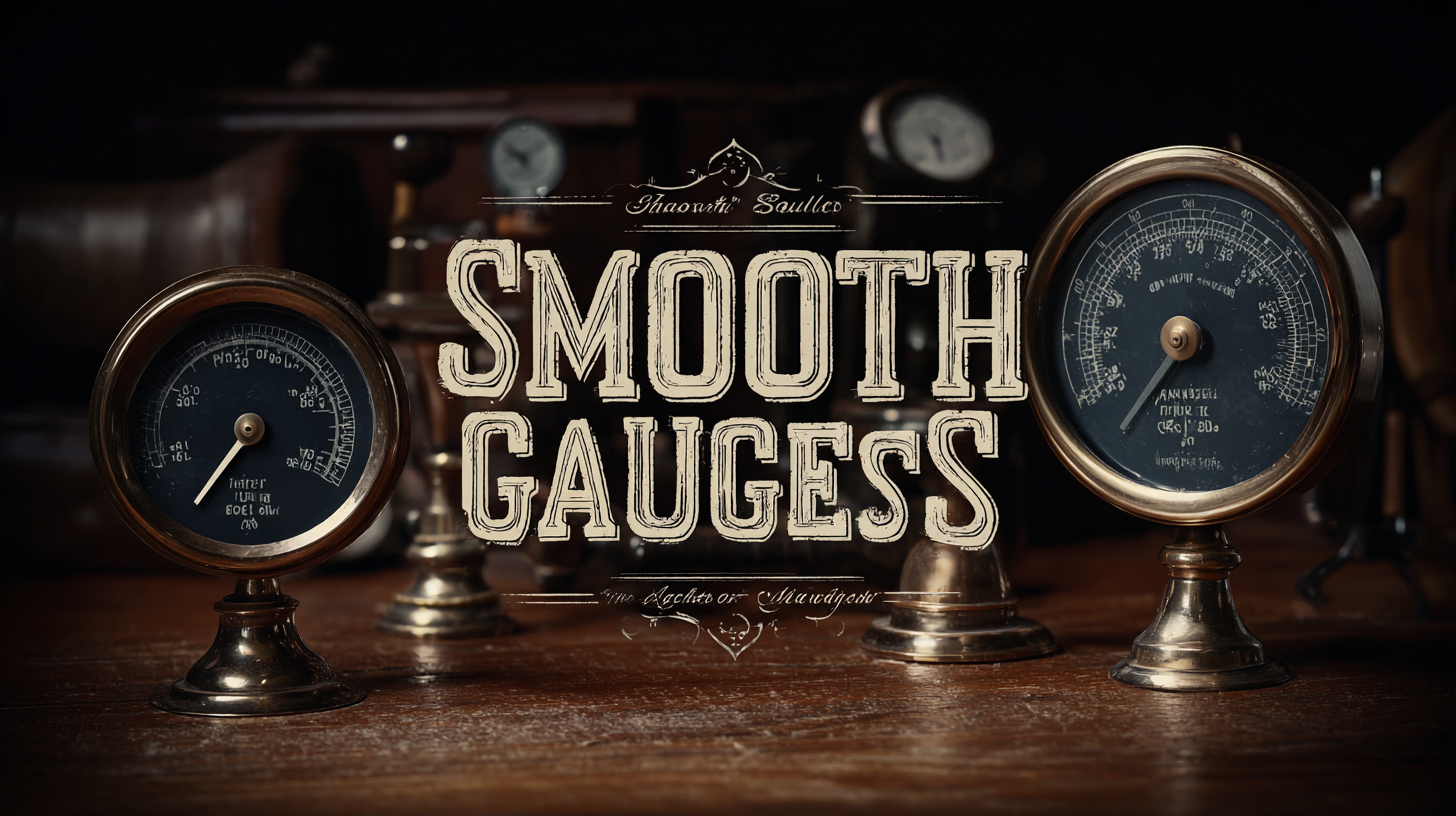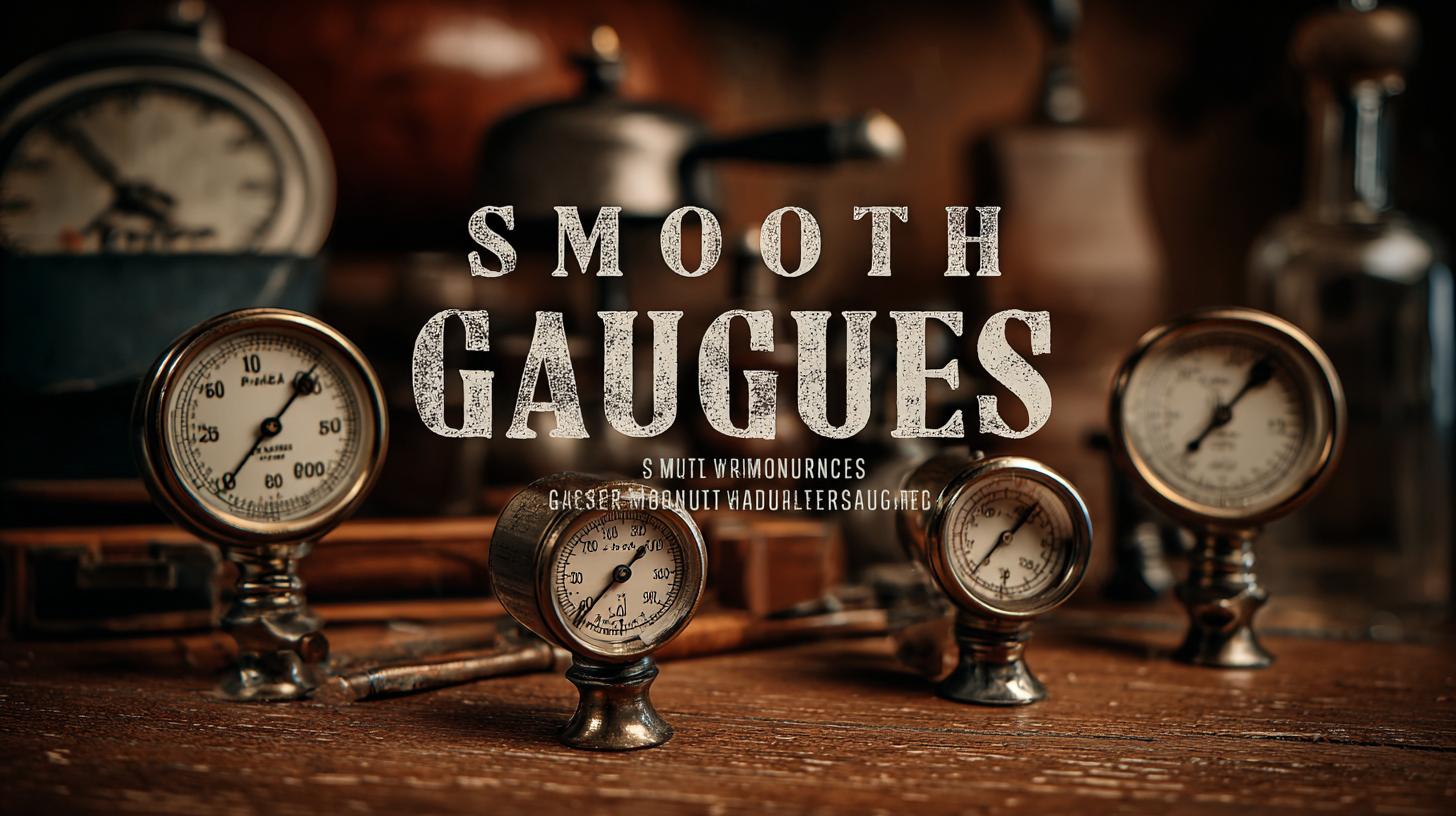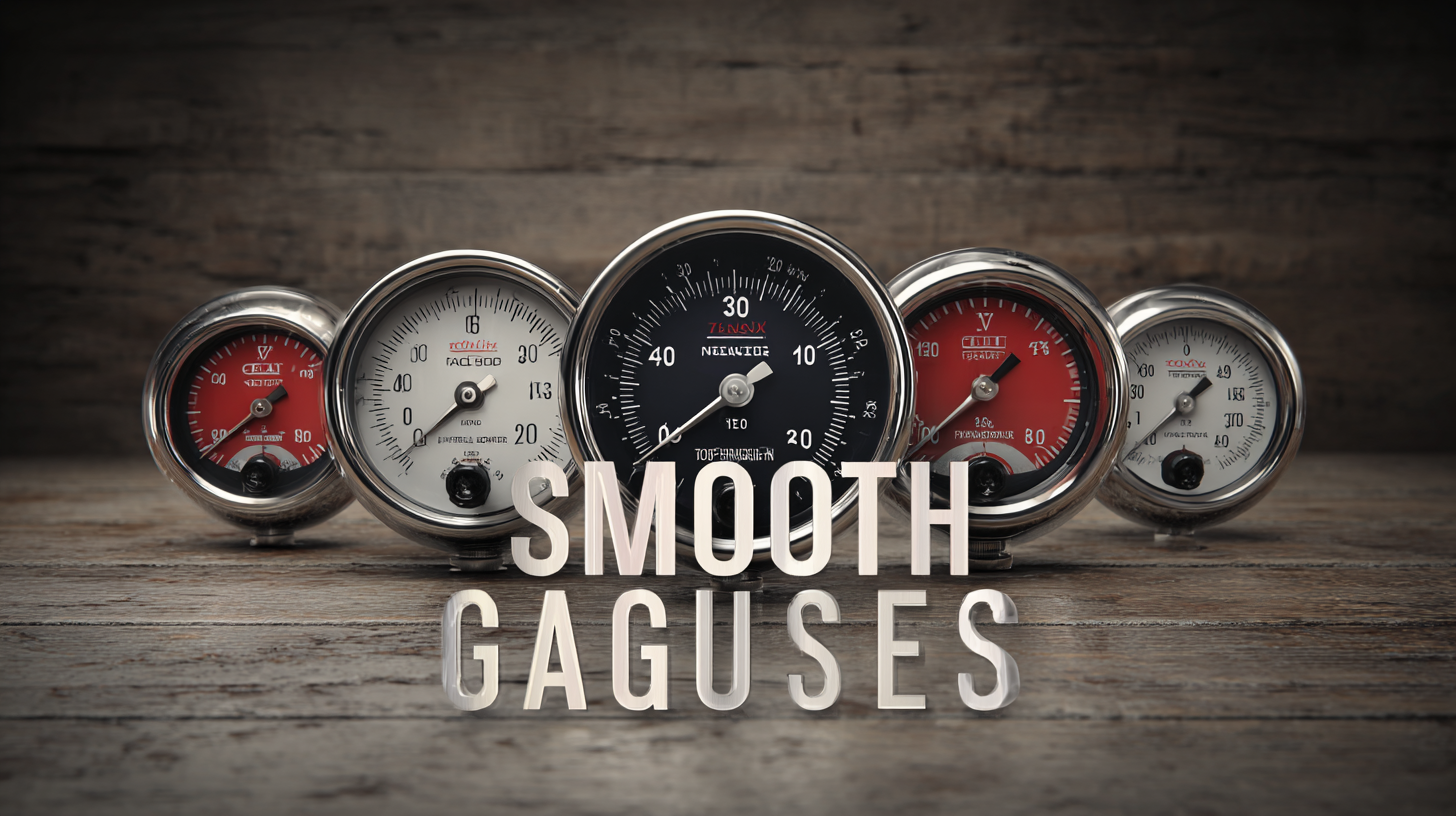
In the realm of precision measuring tools, the importance of accuracy and reliability cannot be overstated. According to the Precision Measurement Report 2022, improper measuring tools can lead to production deviations of up to 5%, which can significantly impact overall quality and efficiency. Among various measuring instruments, Smooth Gauges stand out due to their ability to provide highly precise measurements, minimizing the risk of error.

These gauges are engineered to deliver uniformity and consistency, making them essential in industries where even minor discrepancies can result in financial losses or safety hazards. Furthermore, research indicates that the use of high-quality Smooth Gauges can enhance operational efficiency by reducing measurement time and improving data accuracy, thereby solidifying their role as a vital component in modern manufacturing and quality control processes.
Smooth gauges have become an essential tool in precision measurement within engineering and manufacturing industries. Their design allows for the accurate measurement of small dimensions, significantly reducing the probability of errors in production processes. Data from a recent report by the National Institute of Standards and Technology (NIST) indicates that utilizing high-quality smooth gauges can improve measurement accuracy by up to 95%, which is critical in industries where precision dictates the quality and performance of the final product.
In addition to accuracy, smooth gauges offer enhanced durability and ease of use. Unlike traditional measurement tools, they are less prone to wear and tear, leading to lower maintenance costs over time. A study conducted by the Engineering and Manufacturing Association found that companies adopting smooth gauges reported a 30% reduction in measurement-related discrepancies, showcasing their effectiveness in minimizing resource waste and ensuring compliance with industry standards.
Tips: When selecting smooth gauges, always consider the material quality—opt for those made of hardened steel or carbide for better longevity. Additionally, regularly calibrate your gauges to maintain their precision and ensure consistent performance throughout your production processes.
Smooth gauges have become indispensable tools in automotive precision measurements, offering accuracy and reliability that are crucial in today’s manufacturing processes. As the global market for metal feeler gauges is projected to grow from USD 95.5 million in 2023 at a CAGR of 3.2% until 2030, the automotive sector is increasingly leveraging these tools to enhance quality control and ensure precise fit and finishes in components.

One of the primary applications of smooth gauges in the automotive industry is measuring the clearance and alignment of engine parts, where even the slightest deviations can lead to performance issues. By utilizing smooth gauges, manufacturers can achieve better consistency in production, thereby minimizing waste and maximizing efficiency in their operations. Tips for effective use include regularly calibrating your gauges to maintain accuracy and keeping them well-maintained to prevent wear and tear.
In addition to traditional methods, the emergence of optical gauges is revolutionizing 3D metrology, providing new dimensions to precision inspection. Automotive manufacturers are integrating these advanced gauges to improve the accuracy of complex part measurements, catching errors that might otherwise go unnoticed. Tips for integrating optical gauges into your measurement processes include training personnel to utilize the technology effectively and running comparative tests against conventional gauges to validate findings.
Smooth gauges play a crucial role in enhancing quality control, particularly within the aerospace industry. As precision measuring tools, they ensure that components meet stringent specifications, which is critical given the high standards of safety and performance in aerospace applications. The global metal feeler gauge market, valued at approximately USD 95.5 million in 2023, is projected to grow at a CAGR of 3.2% from 2024 to 2030. This growth underscores the increasing reliance on precision measuring technologies, including smooth gauges, to deliver consistent quality.
Incorporating advanced technologies such as 3D optical profiling, the industry is witnessing superior resolution measurements that are vital for complex components used in aerospace manufacturing. This technology surpasses traditional measurement speeds and accuracy, providing manufacturers with reliable data to ensure that each part complies with rigorous quality standards. Moreover, the use of air gages in the quality control process has proven to be both efficient and cost-effective, further solidifying the essential role of smooth gauges in maintaining the integrity and safety of aerospace products.

When selecting the right smooth gauge for your precision measuring needs, it’s essential to consider several key factors. Start by evaluating the specific application you have in mind. Different smooth gauges come with various features tailored to distinct measurements, whether it’s for metalworking, woodworking, or other industrial uses. Understanding the material and range of measurements required for your project will guide you toward the most suitable gauge.
Next, think about the ease of use and calibration of the smooth gauge. Look for tools that offer intuitive designs and clear markings, which can enhance efficiency in your measuring tasks. Additionally, consider the importance of material durability and build quality, as these factors can significantly impact the longevity and accuracy of your measurements. Selecting a smooth gauge made from high-quality materials will ensure that it withstands regular use while maintaining precision over time. By carefully assessing these aspects, you can confidently choose the best smooth gauge that meets your specific measuring requirements.
Smooth gauges are revolutionizing the manufacturing industry by significantly enhancing production efficiency. In real-life scenarios, companies that implement these precision measuring tools witness remarkable improvements. For example, a well-known automotive manufacturer reported a 30% decrease in assembly time after integrating smooth gauges into their quality control processes. By ensuring precise measurements, these tools reduce errors, minimize waste, and streamline workflows, directly impacting the bottom line.
One tip for maximizing the benefits of smooth gauges is to ensure proper training for your team. Even the best tools can underperform without skilled operators. Investing time in educating your workforce on the correct usage and maintenance of smooth gauges will not only boost accuracy but also foster a culture of quality. Additionally, regular calibration of smooth gauges is crucial in maintaining their precision over time. This proactive measure can significantly reduce downtime caused by equipment failure or measurement discrepancies.
Another effective strategy is to integrate smooth gauges into a comprehensive quality assurance program. By using these tools in conjunction with data analytics, manufacturers can identify trends and areas for improvement, leading to sustained production efficiency. This combination of precise measuring tools and informed decision-making creates a robust framework for success in high-stakes manufacturing environments.

